Aim:
To determine the coefficient of discharge of venturi meter.
Experimental setup:
The experimental setup consists of a circuit through which the water is continuously circulated. The circuit has two parallel pipe lines of 20 mm and 25 mm dia. Each pipe line is connected with a venturi meter. Venturi meter is having a d/D =0.6 and are provided with two pressure tappings one at upstream and other at throat. A U-tube differential manometer is provided to measure the pressure difference between two sections of the venturi meter. A regulating valve is provided on the downstream side of each pipe to regulate the flow. A collecting tank is used to find the actual discharge through the circuit.
Formulae:
1. Actual discharge, `Q_{act}=\frac{AR}{T}` cm3/sec
2. Theoritical discharge, `Q_{th}=\frac{a_{1}a_{2}\sqrt{2gh}}{\sqrt{a_{1}^{2}-a_{2}^{2}}}` cm3/sec
3. Coefficient of discharge, `C_{d}=\frac{Q_{act}}{Q_{th}}`
where,
A = Cross sectional area of the collecting tank in cm2
R = Rise in the level of water in collecting tank in cm
T = Time taken for R cm rise in collecting tank
g = Acceleration due to gravity = 980 cm/sec2
a1 = Cross-sectional area of the pipeline in m2 = `\frac{\pi d_{1}^{2}}{4}`
a2 = Cross-sectional area of throat in m2 = `\frac{\pi d_{2}^{2}}{4}`
d1 = Diameter of the pipeline in m
d2 = Diameter of the throat in m
h = Difference in manometer limb readings in cm of water = 12.6(hm)
hm = Difference in manometer limb readings in cm of mercury = h1 - h2
h1 = Left limb manometer reading in cm of mercury
h2 = Right limb manometer reading in cm of mercury
Theory:
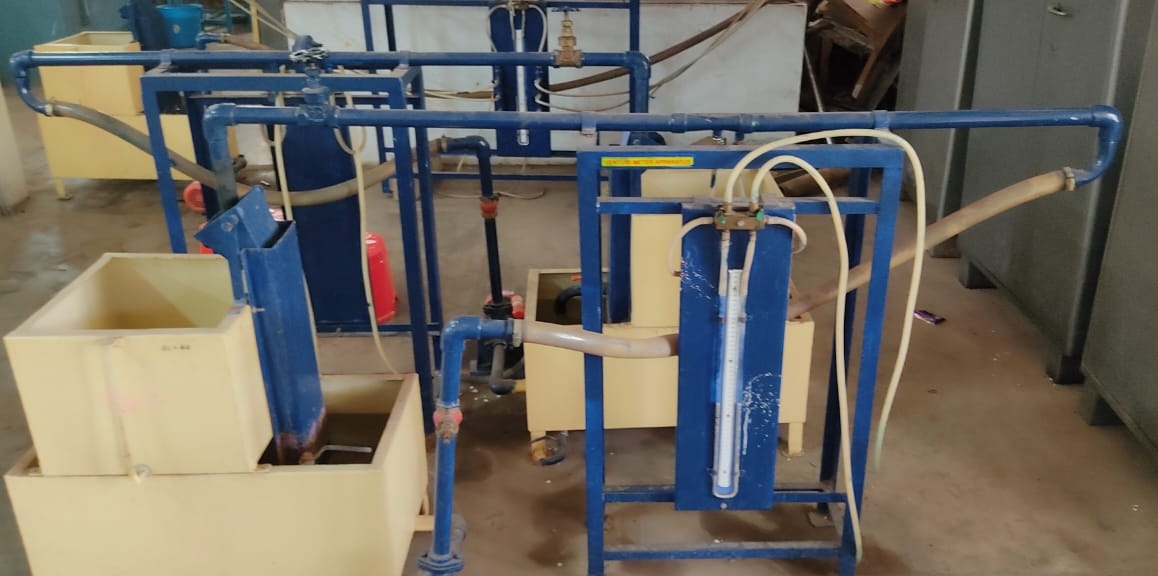
Venturi meter is a device used for measurement of rate of flow of fluid through a pipe. The basic principle on which venturi meter works is that by reducing the cross- sectional area of flow passage, a pressure difference is created and the measurement of the pressure difference enables the determination of the discharge through the pipe.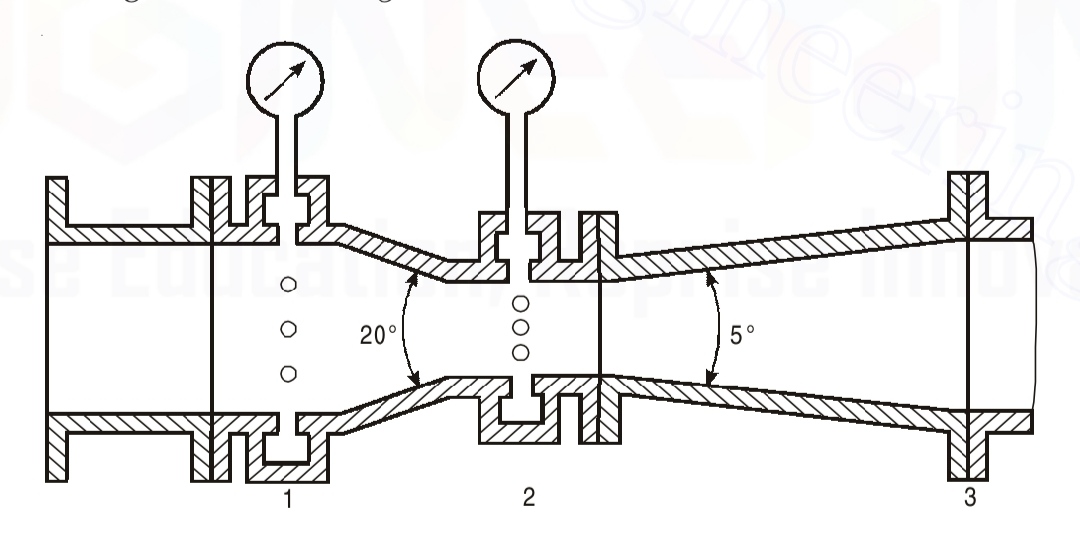
A venturi meter consists of
(1) an inlet section followed by a convergent cone
(2) a cylindrical throat
(3) a gradually divergent cone.
Since the cross–sectional area of the throat is smaller than the cross-sectional area of the inlet section, the velocity of flow at the throat will become greater than that at the inlet section, according to continuity equation. The increase in the velocity of flow at the throat results in the decrease in the pressure at this section. A pressure difference is created between the inlet section and throat section which can be determined by connecting a differential U- tube manometer between the pressure taps provided at this section. The measurement of pressure difference between these sections enables the rate of flow of fluid (Q) to be calculated as
`Q=\frac{C_{d}a_{1}a_{2}\sqrt{2gh}}{\sqrt{a_{1}^{2}-a_{2}^{2}}}`
Where,
Cd is coefficient of orificemeter
a1 is cross- sectional area of throat
a2 is cross –sectional area of pipe
g is the acceleration due to the gravity
h is the difference of head in terms of water.
Procedure:
1. Note down the relevant dimensions, such as the diameter of the pipe, the diameter of the throat, the area of the collecting tank, etc.
2. The regulating valve of a pipe line is kept open.
3. The pressure taps of a venturi meter are kept open.
4. Open the inlet flow control valve and regulate the valve to allow a steady flow through the pipe. Check if there is any air in the manometer tube. If so, remove it.
5. The flow rate was adjusted to its maximum value. By maintaining a suitable amount of steady flow or near steady flow in the pipe circuit, there is a steady, non-uniform flow in the circuit. Time is allowed to stabilise the levels in the manometer tube.
6. The discharge flowing in the circuit is recorded together with the water levels in the left and right limbs of the manometer tube.
7. The flow rate is reduced in stages by means of a flow control valve, and the discharge and readings of the manometer are recorded for every stage.
Observations:
Cross sectional area of the collecting tank, A = .......... cm2
Rise in the level of water in the collecting tank, R = ........... cm
Diameter of the pipe, d1 = .......... cm
Diameter of the throat, d2 = .......... cm
Table:
| SNo. |
h1 (cm) |
h2 (cm) |
T (sec) |
hm (cm) |
h (cm) |
Qth (cm3/sec) |
Qact (cm3/sec) |
Cd |
|---|---|---|---|---|---|---|---|---|
| 1 | ||||||||
| 2 | ||||||||
| 3 | ||||||||
| 4 | ||||||||
| 5 |
Graphs:
1. Q Vs h: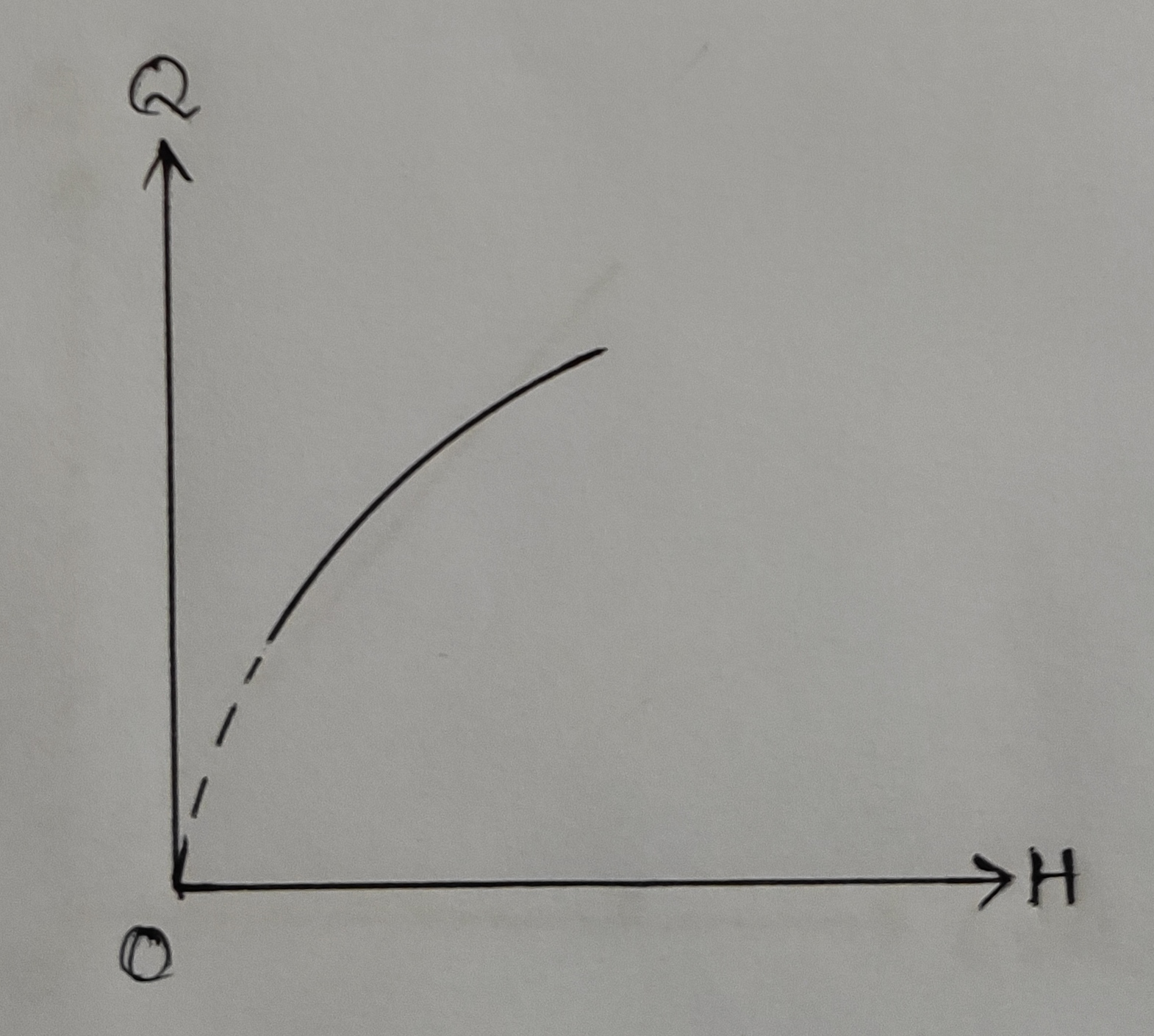
2. Log Q Vs log h: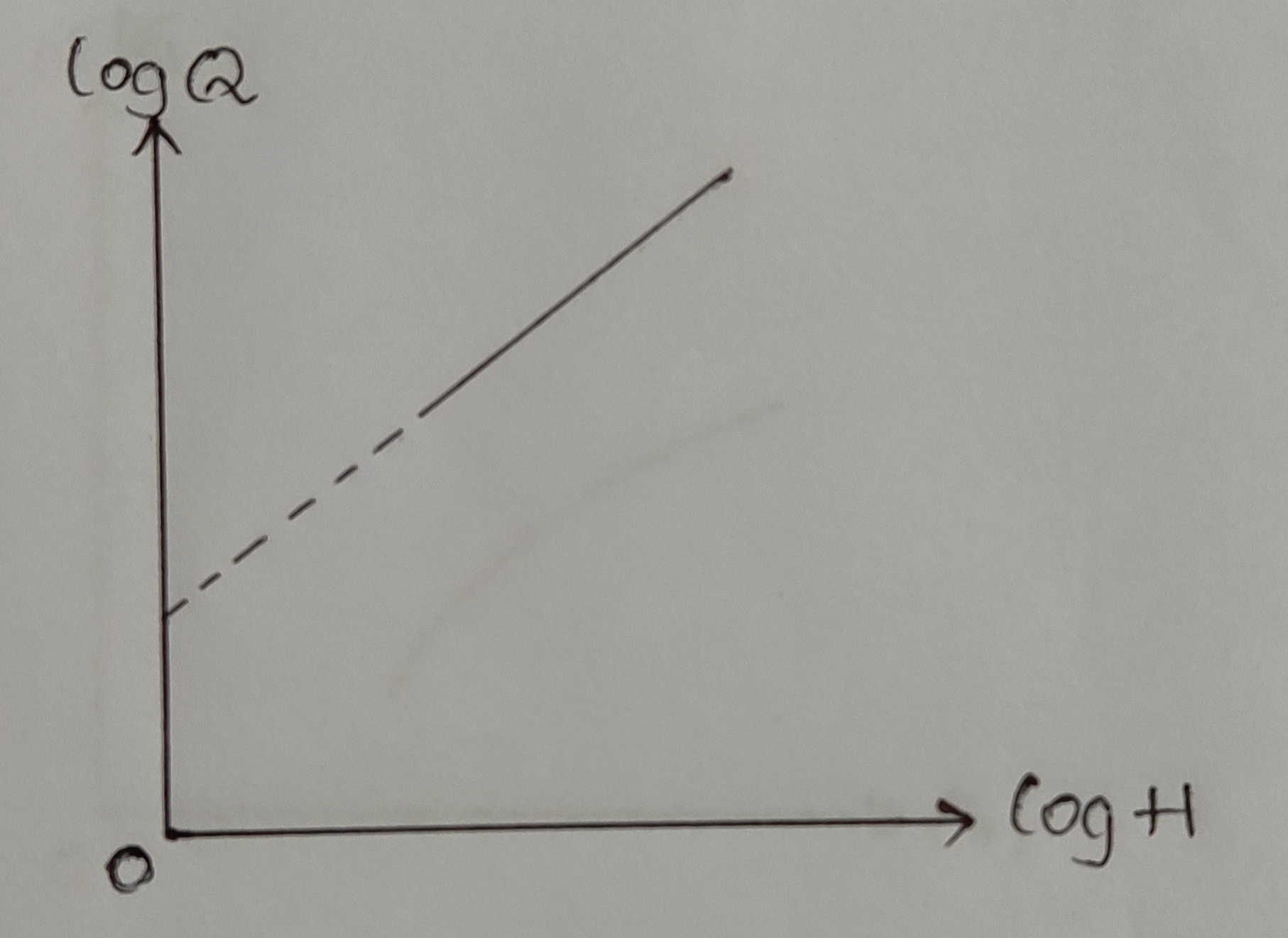
3. Q vs `\sqrt{h}`: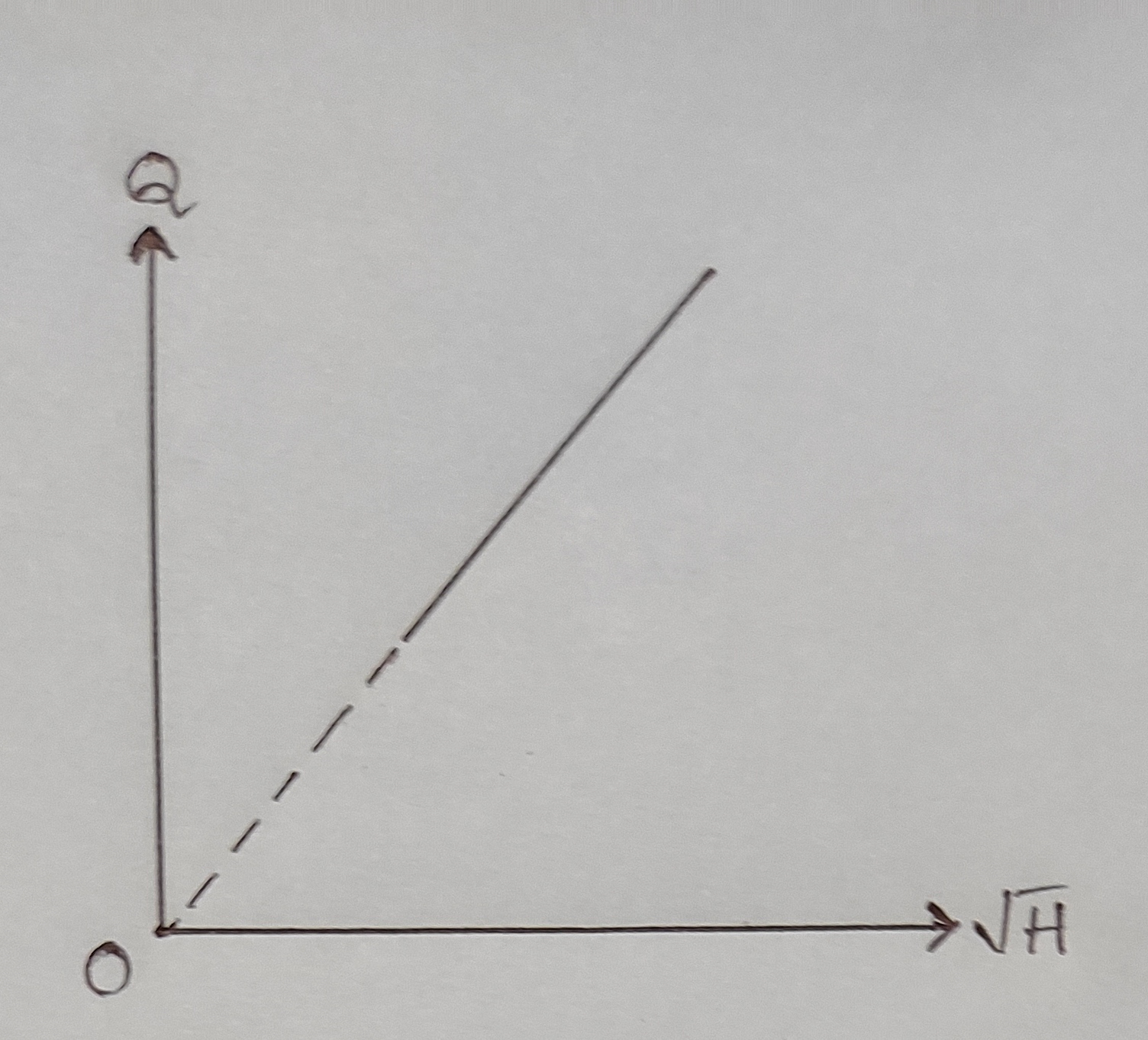
Precautions:
1. Remove all entrapped air from two limbs of manometer.
2. Maintain constant discharge for one set.
3. Piezometric scale readings should be recorded at eye level.
Result:
Coefficient of discharge of venturi meter,
a) From average of calculated values, Cd = ..........
b) From Qact Vs h graph, Cd = ..........
c) From Qact Vs `\sqrt{h}` graph, Cd = ..........
d) From log Qact Vs log h graph, Cd = ..........